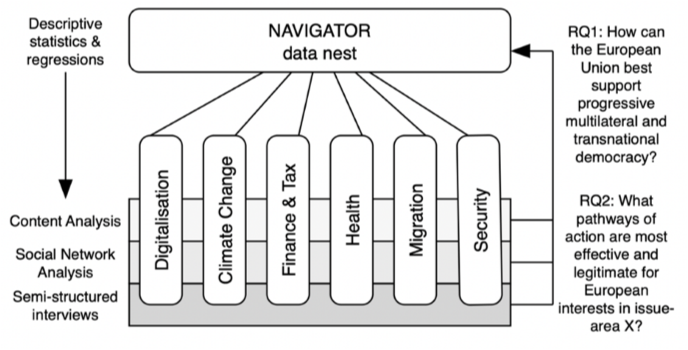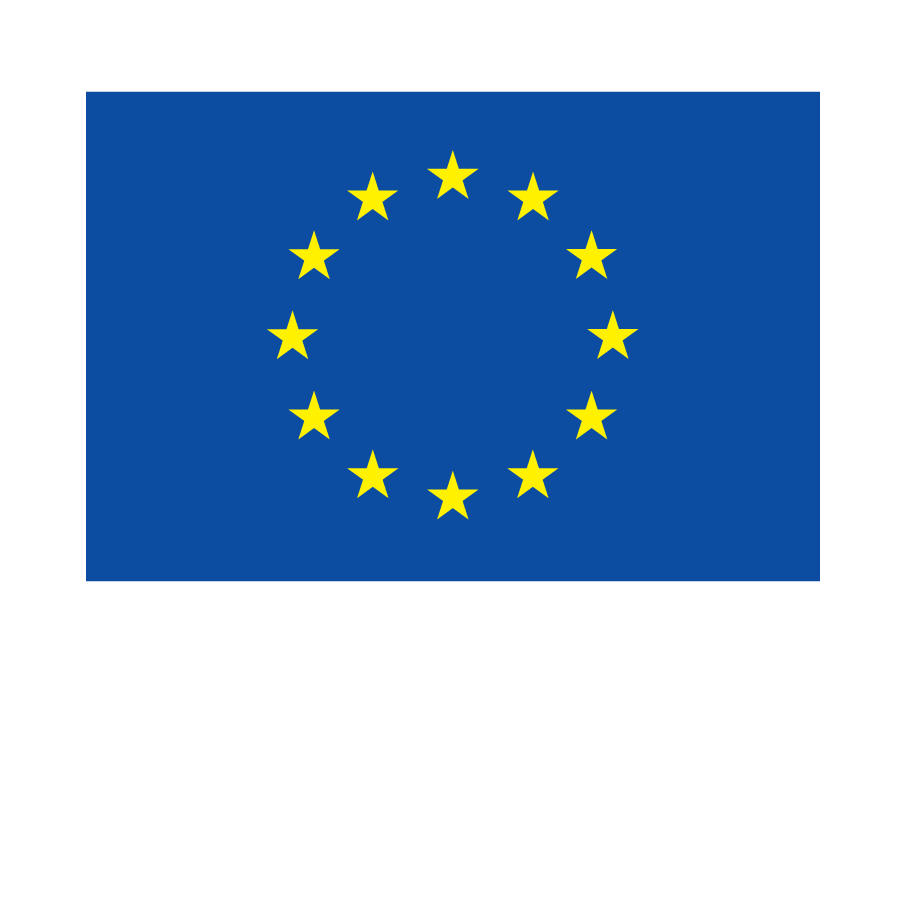
STEP
01
Creating the NAVIGATOR data nest
Step 1 involves mapping established datasets on the scope and attributes of different hybrid and public-private arrangements (e.g. Abbott, Greene and Keohane 2016) or so-called “low-cost institutions” that deliver global public goods, from state and non-state actors, in addition to existing intergovernmental arrangements (Andonova 2017; Westerwinter 2021). Relevant current datasets include Westerwinter’s TGI database on governance arrangements (ibid.), as well as the Transaccess dataset on intergovernmental openness to civil society actors (Sommerer et al. 2015). In addition we will draw on the Polity5 database. Likely sources of policy data for the nest include Eurostat, EU Climate Tracker, the EU Transparency Register, Bank for International Settlements, International Monetary Fund, Organisation for Economic Co-operation and Development, World Health Organization, International Organization for Migration, World Bank, European Defence Agency, and United Nations. This data will be collected across the issue-areas and provide descriptive statistics on the contemporary context for the issue-areas. Once there are further steps on the issue-areas cases this nest will then be used to test propositions on actionable pathways considering trends in the data and using regression analysis to identify likely trends. In Step 1 we prioritize identifying patterns and possible co-variation of key explanatory factors in existing datasets to formulate provisional propositions to facilitate comparisons between issue-areas and serve as a guide for step 2.
STEP
02
SNA to refine and (re-)formulate propositions
In step 2, we add layers with a toolbox of methodologies to reveal information on the issue-area cases. This is to identify organizations and governance arrangements according to their formality, accessibility, and normativity, resources constraints, and political sensitivities. Across the cases we use content analysis, social network analysis, semi-structured interviews and European and global surveys to obtain both quantitative and qualitative information to then discuss in relation to the nest of data identified above in Step 1. Content analysis is a text-based assessment of content from documents and social media. The text is analysed for frequency of word use and word associations and the text coded for the presence of researcher-informed categories (Singh 2021; Ban 2022). These categories form a network of associations that can be analysed to identify formality, accessibility, and normativity in statements from organizations in addition to locating formal organizational traits. This approach has been used successfully to identify and differentiate policy positions from European agencies and other organizations (Crespy and Vanheuverzwijn 2019), as well as differing narratives and emphases in intergovernmental and non-state actor communities (Kentikelenis and Voeten 2021). Social network analysis identifies ties between nodes in a network to characterize its structure and locate who or what is important in the network according to a variety of centrality measures (Burt 2010). Ties can be established based on data derived from documents (such as participation in events and working groups), or from interviews. This data can also be analysed with community detection algorithms to locate groups of interest. Such work has previously been applied to the European policy landscape to identify those likely to carry influence, including those who are not formally mandated (Chalmers and Young 2020). Content and social network analyses have also been successfully combined to determine competing frames and ideas in an issue-area alongside the organizations and professionals competing over them (Ban et al. 2016). Semi-structured interviews with a gender balanced set of interviewees provide a way to access information from those important within identified organizations and central to social networks. They also offer unique knowledge on policy direction within issue-areas and show which organizations and professionals are regarded as important (Mosley 2013). Surveys enable us to gather perceptions on the legitimacy and effectiveness of selected global governance arrangements and to map differences of opinions in terms of gender, geography and diversity.
STEP
03
Synthesize findings and organize strategy sessions with stakeholders to identify policy implications and forecast future scenarios
Combined, content analysis, social network analysis, semi-structured interviews and European, global and transatlantic surveys will be used by the NAVIGATOR team to explore the issue-areas and answer RQ2 on pathways of action. When taken together and in collective conversation, this will allow the team to answer RQ1. In step 3, we shift gears with two aims: First, to synthesize findings based on steps 1-2 in terms of the position, functioning, and evolution of governance arrangements and the role of the EU and its member states within these. Second, to identify the search costs for pathways of action across the issue areas, allowing the NAVIGATOR team to provide forecasting assessments as background for tailored “strategy expert group meetings” with stakeholders within the EU and with member states, as well as with relevant private actors engaged in these global governance arrangements.
ECFR EU survey; the ECFR global survey (to be established); and the TF Transatlantic Trends survey. These survey instruments are already funded by other actors, and ECFR and TF have confirmed that NAVIGATOR will be able to provide questions into these surveys.
Formality, accessibility, normativity
The recommendations will be visually distilled in the Global NAVIGATOR, depicted above in Figure 1. Conceptually, the navigation nomenclature is already well known for the EU. The EU has already developed several compasses for a range of policy fields such as the EU Taxonomy Compass, the EU-Compass for Action on Mental Health and Well-being, the EU Digital Compass for the EU’s digital decade, and the EU Strategic Compass in the security field. The NAVIGATOR project draws on this terminology believing that the navigation metaphor can be used analytically to examine individual global governance institutions and arrangements and find commonalities between these.
To do this, we construct composite variables that are grouped in three scalar categories. NAVIGATOR stresses the importance of locating organizations according to their formality (formal to informal), accessibility (closed to open), and normativity (technical to normative). This means an assessment of relevance organizations in an issue-area environment.
1
On formality this ranges from a formal intergovernmental mandate from a constituting agreement and informal means more club-based or hybrid or multi-stakeholder.
2
On accessibility, this ranges from being open to public debate and deliberative while closed means closed to public debate and coordinated beyond closed doors.
3
On normativity we understand this as from an emphasis on apolitical technical discussions to explicit espousal of normative goals.

